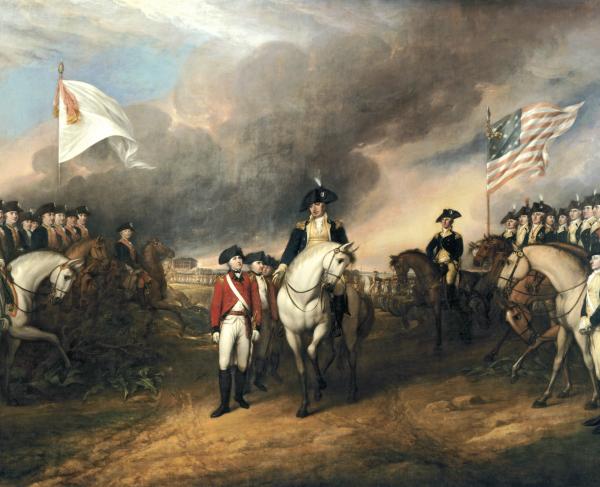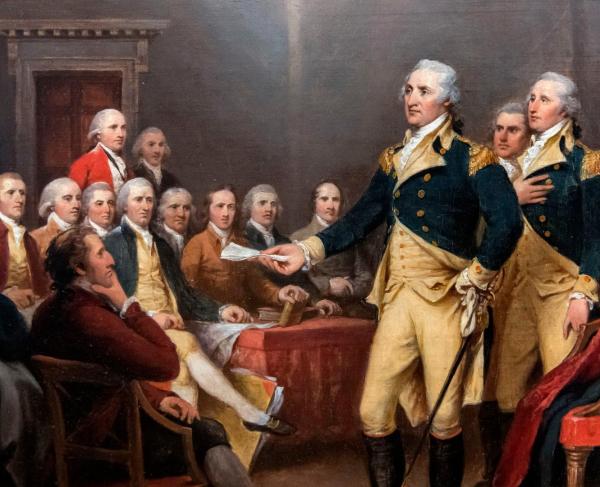
Minute Man National Historical Park, Concord, Mass.
Although Minute Man National Historical Park was established by law on September 21, 1959, efforts to protect those historic landscapes began decades earlier and, through the efforts of nonprofit organizations like the Trust and its allies, extends to the present day.
To mark the centennial anniversary of the battles that began the Revolutionary War, the famous David Chester French “Minute Man” statue was erected near the North Bridge and the Town of Concord purchased that landmark and surrounding area. A decade later, the Lexington Historical Society was founded, which purchased and restored significant buildings, including the Hancock-Clarke House, where John Hancock and Samuel Adams stayed the night before the battle (moved to present location in 1896), as well as the Buckman Tavern, where Lexington militia gathered near the Battle Green, and the Munroe Tavern, used as a British field hospital during the retreat, both of which opened to the public in 1913. The Meriam House was donated to the town of Concord by its private owners in 1924.

The success of the Historic American Buildings Survey in the 1930s and the growing threat of suburbanization along the Battle Road following World War II prompted an early 1950s study of feasibility to create a federal historical park in the vein of what had been done around Yorktown, Virginia.
The purpose of the park ultimately created by Congress was straightforward: “To preserve and interpret the historic structures and landscapes associated with the opening of the American Revolution which lie along the route of battle of April 19, 1775…” Furthermore, the park was “to foster understanding of the events, causes, and consequences of the American Revolution. Six years after the creation of the park, the building where authors Amos and his daughter Louisa May Alcott, Nathaniel Hawthorne, and Margaret Sidney all lived at different times was incorporated into the national historical park.
Between the Park’s creation and the Bicentennial, there was an ambitious campaign to acquire land through purchase from willing sellers, or authorized instances of eminent domain, to create a five-mile corridor of the Battle Road. A number of 20th century buildings, including homes, gas stations and diners were removed and the landscape restored as part of this process, including a complex and controversial negotiation with the Department of Defense over housing associated with Hanscom Air Force Base that stretched into the 1990s.
In 2002, the first steps were taken to create a new unit area of the park: The Colonel James Barrett Farm, the farthest west point of British advance on April 19, 1775, and the location they believed Patriot munitions to be stockpiled. The 1705 farmhouse remained in the Barrett family until the early 1900s; it was then stewarded by the McGraths for another century, until they sold it to Concord nonprofit Save Our Heritage. The home and 3.4 surrounding acres joined the park in 2012 following a major restoration campaign and a legislative push to expand the park’s authorized boundary.
Just two years later, the American Battlefield Trust expanded its mission to include protection of Revolutionary War sites and swiftly embarked on a campaign to acquire, study and restore land associated with “Parker’s Revenge,” a key incident on the Battle Road during the British retreat. The Trust contributed $25,000 toward Friends of Minute Man National Historical Park’s effort to archaeologically pinpoint the incident’s location and $300,00 to purchase the relevant one-acre parcel and see it integrated into the park.
In preparation for the battle’s 250th anniversary in 2025, the Trust worked with NPS officials to facilitate the park’s purchase of property immediately adjacent to the Barrett Farmhouse, greatly increasing interpretive opportunities at the key site. Not only did the Trust provide technical expertise on the complicated transaction, but the land was acquired through a funding stream for battlefield-specific inholdings that it had long advocated to create and maintain.
Related Battles
93
300

